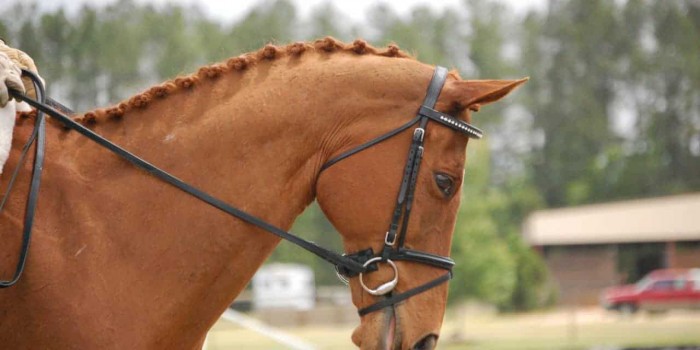
Responses to different bridles during training
Traditionally bitted bridles are the main method of controlling the horse when riding. However, in response to health and behavioural concerns the use of bitless bridles has gained popularity.
Little has been studied about the actual benefits and disadvantages of using bitless bridles compared to bitted bridles on horse welfare and effectiveness in training. The aim of this study was to measure behaviour and cardiac responses of horses undergoing foundation training in a bitless or bitted bridle. The foundation training consisted of bridling, long reining and riding.
The study was executed using four horses. The horses were familiar with basic training like haltering and leading but were not previously bitted or ridden. The bit used was a snaffle and the bitless bridle had an under the chin crossover strap.
The horses wearing the bitted bridle opened their mouth, chewed, pawed and swished their tail more often. These behaviours decreased when training progressed. The horses in the bitless bridle showed more head lowering during long reining. During long reining, the heart rate and heart rate variability of horses was higher for bitted horses. The study showed that horses wearing a bitless bridle responded just as well as the bitted horses to training.
Expert opinion by Anouk van Breukelen
The number of horses used in this study was very limited. Because of this it is hard to disentangle factors that may influence behavioural responses and thus the results, like the character of the horse. Nonetheless, the results are interesting and are worth further investigation as they may have beneficial implications on horse welfare.
> From: Quick et al., Journal of Veterinary Behaviour 4 (2009) 169-176. All rights reserved to Elsevier Inc.. Click here for the online summary.


